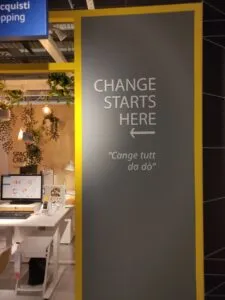
09 Sep IT translation: what you need to know and who it is for
What is Information Technology?
Technology permeates our lives. So does Information Technology translation, or IT translation, even if this is not always as obvious. From the moment the alarm clock wakes us up in the morning to the last chat message we send before going to bed, we are ever more aware of the advances of electronic science, whether they be appliances or devices such as computers and smartphones.
As users of such devices, we are accustomed to using both an international language of symbols (an envelope to recognise emails or email addresses, an ellipsis to indicate more functions, a question mark to search for help, etc.) and our own language to navigate the vast quantity of information we access on a daily basis. However, because symbols are not unique and can mean different concepts to different cultures, words are still the most immediate means of communication in the wake of globalization. In essence: translators are the catalyst to convey technology, innovation and information around the world.
Information technology, or IT, is the usage of devices to create, delete and manage all sorts of electronic data, including this very article you are reading.
Can such an important aspect of our lives afford to be neglected when migrating from one language to another? Here and now, in the Digital Era, most definitely not.
What types of IT documents require translations?
IT translation is a very broad term which includes a plethora of text types and genres that translators work on daily to ensure each piece of writing is properly understood by the target audience. That is to say, there is a vast range of types of translations that require different skills.

Is techno-spirituality found in translation…?
Here are but a couple of examples to better explain:
- User manuals:
Being mostly informative pieces of writing, they need to be concise and straight-to-the-point. Their main purpose is to explain how an object/system works and/or provide solutions and instructions. As they often include repetitive phrases, they might look quick to translate – but that is the least of a translator’s worry. Terminology coherence, that is, using the same words to represent the same object or action, is a must in IT translations, and even more so in this context of use. The translator’s job is to ensure that each term is chosen properly and the writing style perfectly illustrates the process when using such a product.
- User interface:
Software and apps of any sort are made up of both a source code and a user interface. What we see on the screen is the way we send commands to the apps, but the result of these actions cannot directly be seen nor understood immediately, and not everyone can afford a trial and error process to learn which function-does-what. Translating a user interface, similarly to manuals, requires a very precise termbase (a glossary of terms specific to that sector) curated by either the translators themselves or a team of linguists, and a similarly strong awareness of the length of the text (not all text boxes accommodate for longer words). As technology exists to enhance our lives, someone working on this type of IT translation will make sure that the end-user feels in control of your app, rather than at its mercy.
- Marketing:
Not every IT translation or piece of writing is meant to be cold and down-to-earth! After all, the very text a prospect reads is marketing-related. Whether it is the envelope or the product description on whichever virtual platform, such as Amazon, nothing beats a well-written line that strikes a chord with your customer. However, will an Italian slogan be as effective when translated into English? What if it hinges on an untranslatable pun? What if that slogan is in a specific Italian dialect, chosen according to the region the store is based in? One word: transcreation. Transcreation is a type of translation which puts a translator’s creativity to the test. It can easily forgo part of the original message to create a new one, never forsaking its core function: to win the reader’s attention. And you cannot simply translate punchlines: this is where the linguists will find one fit for both your brand and your client.
How do we work?
Translation used to be a lot more straightforward business back in the day, yet at the same time it was a very manual process that took longer. However, recent technology, software and services turned it into a much more automatic process. The tools at our disposal are manyfold, but here are some basic ones to get you acquainted with how they help us – and in turn, you.
- CAT Tools
CAT Tools are, by far and large, the most popular type of software we use – and not just because of their name.
In a word, they are programs designed to assist translators through an environment designed specifically for tasks such as:
– Confronting the source text and its translation;
– Memorising often-repeated sentences;
– Subsequently suggesting previous similar translations;
– Keeping track of terms in glossaries specifically chosen for the project
- Termbases
Remember when we talked about how important it is that IT translation documents, such as manuals or software interfaces, keep using the same word to refer to a certain menu or object? Synonyms, in this case just won’t do, and researching highly technical terms each time is time-consuming. Just remember: translators are not walking dictionaries and neither is their memory faultless!
This is why translators use glossaries and termbases to store very specific words, so that they can refer to that database later to ensure coherence without losing too much time. There is also another type of software, terminology extractors, that automate the process of acquiring terms from corpora of texts related to a specific domain (medicine, finance etc.).
Is your technology speaking your client’s language?
When all is said and done, a product’s or service’s value is only as high as your target audience. To reach other markets, you need to speak their language – their culture. This is why translation agencies, such as Creative Words, specialise in making sure your customers feel understood.

A Swedish chain store in Apulia, Italy, using local dialect to crack a smile. Glocalization.
A host of companies, including Costa Crociere, IRBM and many more, already use our services. From tourism to technology hubs, to digital platforms, we can always tailor solutions to fit your every need. Thanks to our advanced automation processes we cut down on translation costs, turnaround time and ease of delivery, using IT at its fullest in order to bring your business to your customers.
Need a large set of documents translated for a new market? Come to our website and let’s get the discussion going!





